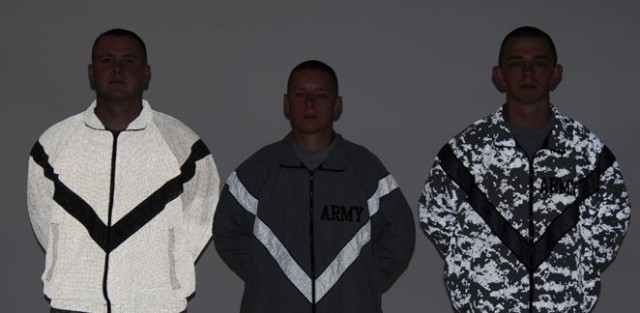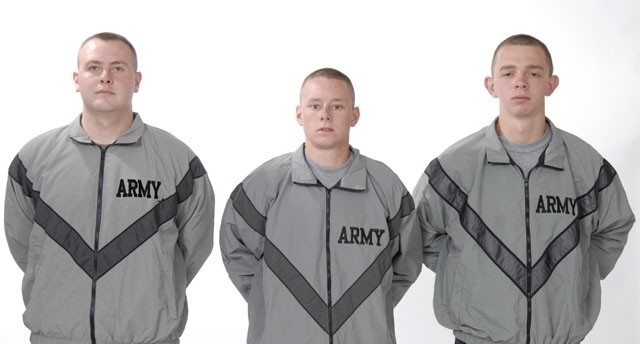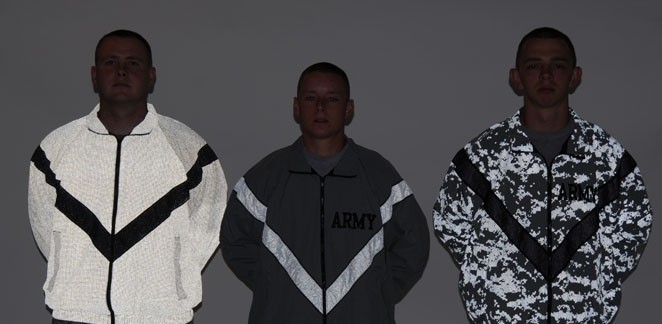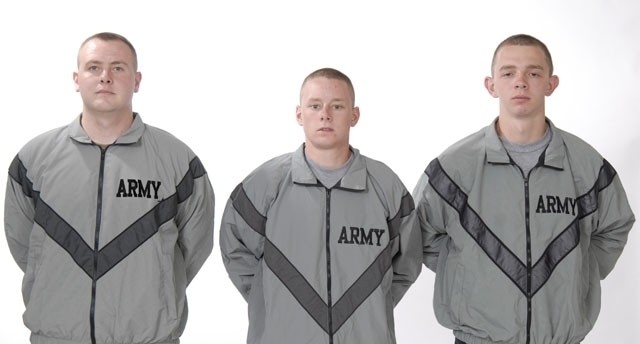NATICK, Mass. (Army News Service, Nov. 6, 2007) - Soldiers this month will begin testing two new PT-jacket prototypes made from fabrics designed to provide more reflection in dark early-morning or evening hours.
About 600 troops at Fort Hood and Fort Bliss, Texas, and Fort Lewis, Wash., will participate in the user evaluations. The participating Soldiers will be surveyed on their opinions of the sample jackets, said officials from the U.S. Army Natick Soldier Research, Development and Engineering Center.
The U.S. Army Product Manager Clothing and Individual Equipment is working with NATICK's Operational Forces Interface Group to conduct the user evaluation of new reflective technologies which enhance the current Improved Physical Fitness Uniform jacket.
"The more visible the Soldiers are when doing PT in low light conditions, the safer they will be," said Beverly Kimball, product engineer.
Two prototype fabrics have been developed with the new technology and sample jackets have been fabricated; one has a subtle digital-reflective pattern, while the other has a slight texturized-reflective pattern.
"The prototype jackets are very similar in appearance to the current jacket during daylight," said Dave Geringer, assistant product manager, PM-CIE. "However, despite their subtle daylight appearance, both patterns are highly reflective and provide a significant improvement in visibility."
The jackets will be evaluated for comfort, durability, launderability, wind-resistance, water-resistance, warmth, and reflective capabilities.
"All participants will have an opportunity to wear all the test items. But we want to ensure that all the jackets are tested in the same climate and conditions, so we will be conducting a 'within-groups' type evaluation so styles are worn simultaneously," said Ms. Kimball.
The evaluations are expected to continue through March 2008, and once complete, the data will be compiled into a final report.
"If the candidates perform well, they will be presented to the Army Uniform Board for approval to replace the current IPFU jacket," said Mr. Geringer.




Social Sharing